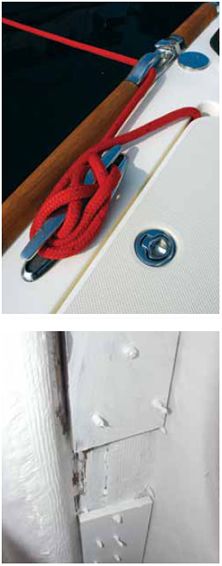
222
The arrival of hurricane season is always a good reminder for boat owners to put together a storm plan detailing where and how the boat will be secured should a storm roll through.
Chafe protection for docking and mooring lines is essential for securing a boat ahead of a storm, but boat owners should also be sure to inspect the cleats themselves. The cleats should be beefy enough to handle the task at hand, and they should be properly supported with sturdy, easy-to-inspect backing plates. In addition to ensuring your cleats are structurally sound, it’s also important to pay attention to line leads. If a line must make a sharp bend at a chock or cleat, the risk of chafe increases significantly, and attaching anti-chafe gear at the bend is imperative. Find out whether your cleats are up to snuff—and how to replace them if they’re not—in our look at chocks and cleats in the March 2010 issue.
Also, if your boat will be riding the storm out on a mooring, be sure to inspect the chain, swivels, and pendant on that mooring for wear. At the heart of any storm prep plan that involves anchoring is the ground tackle and how it’s set. PS Technical Editor Ralph Naranjo has used the following anchor combination and anchoring system with success in various locations to moor his 41-foot Ericson sloop:
• A 45-pound CQR, with 10-millimeter (3/8-inch) all-chain rode, 5/8-inch nylon snubber, and leather anti-chafe gear.
• A Paul Luke 75-pound, three-piece fisherman storm anchor, 50-feet of ½-inch chain, 200-feet of ¾-inch nylon, leather anti-chafe gear (no swivel).
Set the two anchors at about a 60-degree angle, placing the storm anchor toward the worst of the expected wind and sea. Leave enough swinging room to cope with the likely wind shift, which could be as much as 180 degrees.
For our in-depth look at preparing for severe weather, check out the July 2008 issue.
































